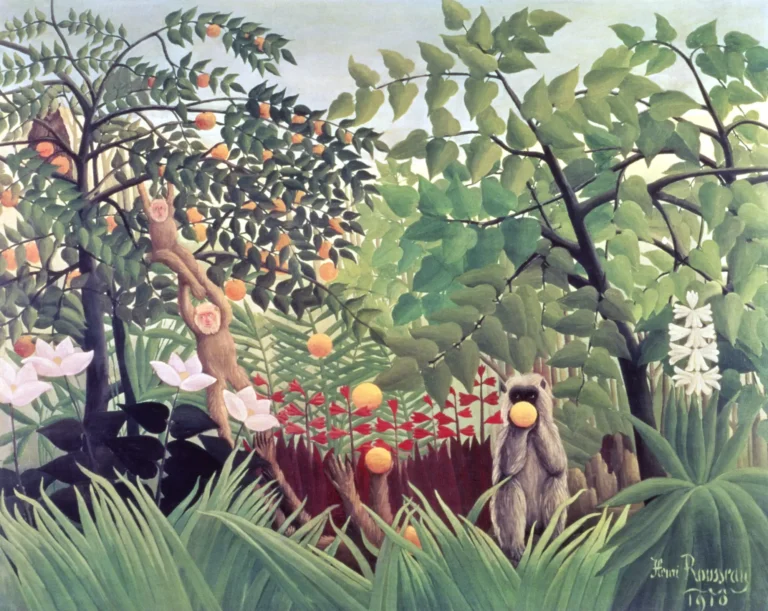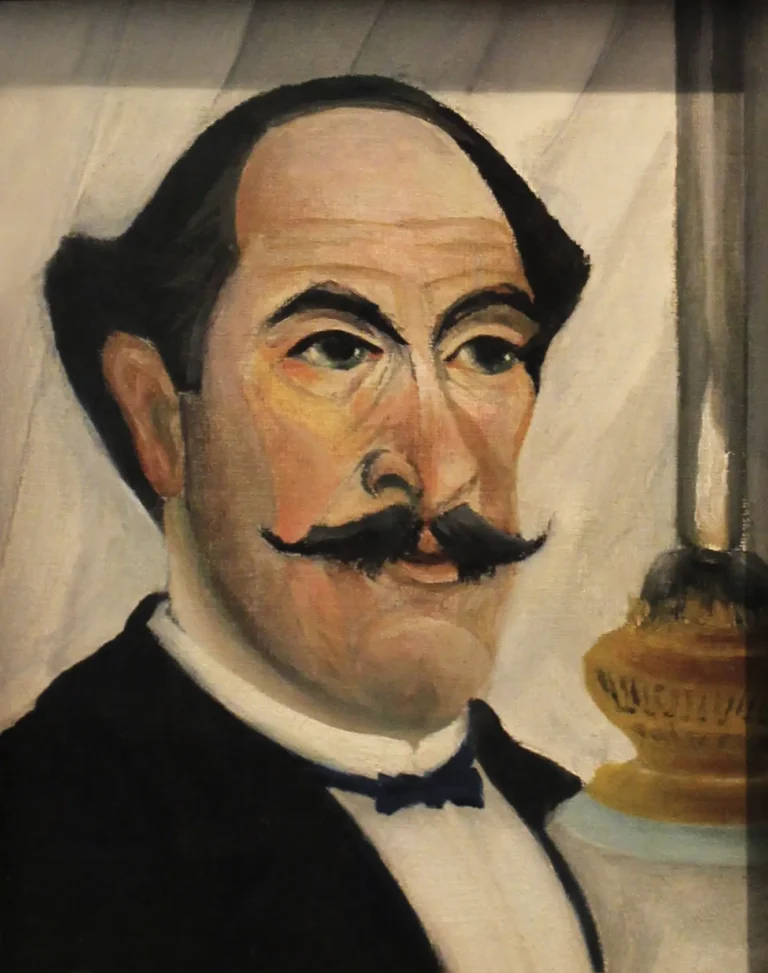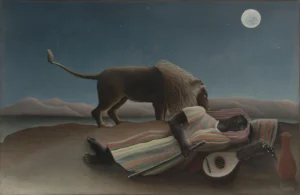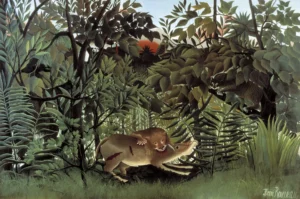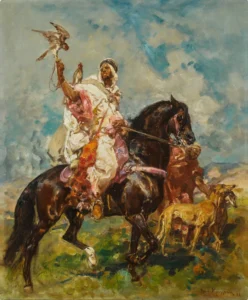Exotic Landscape (1910)
Henri Rousseau's Exotic Landscape, created in 1910, is a significant work within the Naïve Art movement, showcasing lush tropical vegetation in vibrant colors. The painting features an orange fruit tree laden with monkeys and a rich tapestry of greenery, enveloped in a magical light. Rousseau's distinctive style, characterized by flatness and a lack of traditional perspective, draws viewers into a serene and paradisiacal environment, making it a standout piece in the history of art.
Year 1910
About the Artwork
Henri Rousseau, often referred to as 'Le Douanier', embarked on a remarkable journey when he retired from his customs inspection job to pursue painting full-time. Exotic Landscape is a vivid reflection of his innovative imagination and untrained artistry, defying conventional artistic norms of his time. Created in 1910, it encapsulates Rousseau's fascination with jungles and the exotic, inspired by his own visions rather than direct experience. This canvas, teeming with life and color, invites viewers to step into a world of whimsy and fantasy, underlining Rousseau's enduring influence on the Naïve Art movement.
Did You Know
Interestingly, Rousseau had never visited a jungle, yet his art, including Exotic Landscape, drew from his dreams and the escapism of fictional depictions of exotic locales.
Despite facing skepticism from critics, Rousseau’s distinctive style and technique went on to influence numerous artists of the 20th century, making him a pivotal figure in the realm of naïve and modern art.
Rousseau’s work laid the groundwork for the Primitivism movement, which celebrated the art of untrained or non-academic artists, showcasing the beauty in folk traditions and unfiltered creativity.





